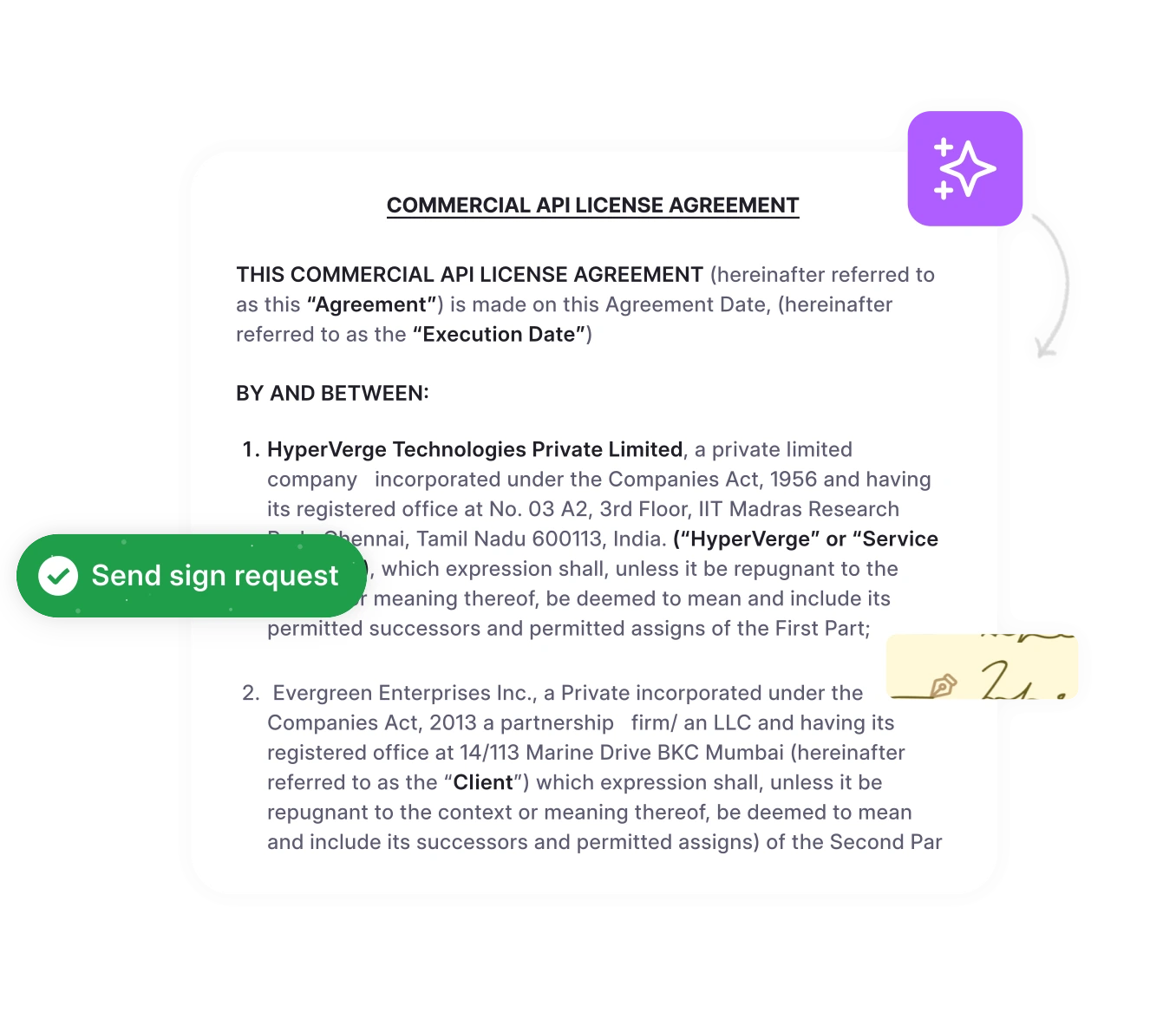To date, Microsoft Excel is the most accessible and cost-efficient tool for managing contracts. It is easy to operate and requires minimal training, making it a go-to choice for legal professionals to handle their contracts. As per Artificial Lawyer, 62% of General Councils still use tools like Excel, SharePoint, and Email to manage contracts.
However, to leverage Excel’s capabilities and features for contract management, you will need a robust contract management template in Excel—one that includes all key functions and formulas to track obligations, renewals, and more. Wondering where to find a template that fits the bill? Look no further.
This blog offers detailed information on using Excel for contract management. Use our free contract management Excel template and follow our systemic process to get started with Excel-based agreement management. Let’s dive in.
What is Excel-based contract management?
Excel contract management refers to the process of using Microsoft Excel to manage, track, store, analyze, and organize the contract portfolio. This is a semi-digital approach to contract management where organizations shift from traditional, paper-based processes to digital platforms for handling contract documents.
With Excel, organizations create centralized spaces to store, analyze, track, and manage business contracts and legal documents. Contract managers, legal professionals, compliance managers, and department managers can access this space.
But, what is the need to manage contracts with Excel? Let’s find out in the coming section.
Why use Excel for contract management?
Excel is one of the most commonly used productivity tools at present. Its simplicity and accessibility make it a leading choice of tool for contract management. Here are the key benefits of managing contracts in an Excel sheet:
1. Cost-effective way to get started
Purchasing a dedicated contract management software can be an expensive and inviable option for small-scale organizations. As per TrustRadius, the cost of a contract management solution can be as high as USD 200 per user per month. On the other hand, Excel is a cost-efficient way to get started with contract management. Most organizations already use the Microsoft 365 suite, making Excel useful for managing contract management processes.
2. No additional training required
Managing contracts with a CLM (Contract Lifecycle Management) tool requires additional training on features and functionalities. However, most organizations and individuals are familiar with at least basic Excel functions and features. Creating filters, managing sheets, and customizing ranges are no-brainer tasks in Excel and can be done with no extra training.
3. Easy inter-department sharability
A contract tracking spreadsheet in Excel makes it easy to share contract data among cross-functional teams like procurement, sales, finance, and legal. You can simply provide the Sheet’s access to different teams and enable access to insightful contract details and insights.
Now that you know why Excel is an excellent tool for managing contracts, let’s take a look at our free contract management Excel template available for download to help you get started quickly.
Free Excel contract management template
If you want to manage contracts using Excel sheets, you will need a contract management spreadsheet template that can handle your legal documents.
This format should be designed for optimal visibility over all contracts at a glance.
To save you the trouble, we have created a simple contract management template that works well with all types and complexities of contracts. This template covers all the critical contract management components and is available for you to download and use. Whether you need a contract tracking spreadsheet, a compliance tracker, or a renewal calendar, this excel template for contract management has you covered. Click the below image to download the Excel template.
Get Your Contract Management Template Now
Use this template and get started with Excel contract management. However, know that managing contracts using Excel comes with considerable challenges and setbacks. The coming section talks about these challenges.
6 reasons why you should not manage contracts using Excel
According to a WorldCC study, an average company loses 9% in contract value due to mismanagement and manual processes. This estimate is even higher for larger organizations, at 15%. Relying on tools like Excel to manage hundreds of approvals, obligations, compliance requirements, and other contracting inefficiencies. Here’s how:
1. Manual obligation and milestone tracking
Tracking contracts, managing obligations, and ensuring commitment fulfillment are essential functions of contract management. However, with Excel, obligation tracking becomes cumbersome due to limited notification and alert functionalities. When organizing large contract datasets with Excel, it becomes challenging to keep a record of every milestone and obligation. This exposes organizations to missed obligations.
2. Reduced visibility over contractual performance
Every contract manager is concerned with one pressing question: “How well are the contracts performing?” Robust contract performance management helps derive insights and identify and eliminate process bottlenecks. Excel does not offer functionalities to track and monitor contract performance, taking away the essential CLM insights from contract managers.
3. High chances of non-compliance
Contractual non-compliance is disastrous for any organization. It hampers business relations, leads to lawsuits, and often ends up in contract termination. When managing contracts with Excel, contract managers, and other key stakeholders often end up missing crucial compliance requirements, primarily due to the lack of visibility over them.
4. Compromised contract security and confidentiality
Contracts contain sensitive business information, trade secrets, and other confidential data, and thus need to be protected. By managing and storing contracts in Excel sheets, you considerably compromise on confidentiality. This may result in contract violations and breaches, leading to lawsuits.
5. More time spent on manual data entry and extraction
Manual data entry is a time-consuming task—even with a well-built contract management template in Excel—and can quickly become a major bottleneck in CLM. When managing contract data in Excel sheets, contract managers have to manually enter all the necessary information. Moreover, this information needs to be updated as the contract gets refreshed and renegotiated. Manual data entry is a time-consuming task and can end up becoming a major bottleneck in CLM.
6. Increased risk of human errors and negligence
Manually entering contract data into Excel sheets and managing agreements is error-prone on account of human negligence. When entering information on hundreds of contracts every day, there are chances of data errors, which is a common root cause of contract mismanagement.
Excel Can’t Do It All
Switch to HyperStart CLM today! Simplify your contract management with automated alerts, secure intelligent storage, and real-time insights.
Excel is not your best choice for managing contracts. So, what is the solution? For successful contract management, we recommend you use contract automation software. Let’s find out why.
Contract management software: A better way to manage contracts
While an Excel-based contract tracking spreadsheet can work in the short term, it lacks the automation and control a modern platform provides. Contract management systems are dedicated platforms designed to handle the entire contract lifecycle. Platforms like HyperStart CLM use artificial intelligence technology to automate the contract management process, thus aiding efficiency.
Here are the benefits of using contract management software over Excel:
- Automates repetitive tasks and auto-extracts data with AI
- Offers better visibility through a centralized dashboard
- Promotes safe contract storage in a secure repository
- Automates alerts for upcoming obligations
- Helps identify and eliminate CLM bottlenecks with ease
Let’s understand each of these benefits in detail.
1. Automate repetitive tasks and auto-extract data with AI
AI streamlines routine tasks like contract creation, data entry, and approval workflows.
Auto-extracts metadata with AI, retrieves key data in seconds, and visualizes contract intelligence in real time.
Reduces the time spent on contract admin, increases overall productivity, minimizes human errors.
2. Get better visibility through a centralized dashboard
Centralizes all contract-related data in one place for easy access and tracking.
Provides real-time insights into contract statuses, key dates, and performance metrics.
Simplifies contract monitoring by allowing quick filtering and searching of contracts.
Enhances collaboration by giving stakeholders a shared view of the contract lifecycle.
3. Store contracts in a secure repository
Ensures contracts are stored in a centralized, encrypted location to prevent data breaches.
Provides version control to maintain accurate and up-to-date contract records.
Protects sensitive information with role-based access and multi-factor authentication.
Reduces the risk of losing important contracts stored on local drives or shared folders.
4. Get automated alerts for obligations
Sends timely reminders for key dates like renewals, expirations, and payment deadlines.
Prevents missed obligations that could lead to penalties or lost opportunities.
Helps maintain compliance with contractual terms and regulatory requirements.
Reduces the need for manual calendar tracking or follow-ups.
5. Easily identify and eliminate CLM bottlenecks
Tracks where contracts are delayed in the lifecycle, such as approvals or negotiations.
Provides actionable insights to optimize approval workflows and reduce turnaround times.
Highlights inefficiencies like redundant processes or resource constraints.
Empowers teams to resolve bottlenecks quickly and improve overall efficiency.
Manage Contracts 80% Faster
Choose HyperStart CLM and auto-pilot routine contracting tasks. Manage contracts smartly and efficiently.
Using contract management platforms is a better option than managing contracts with Excel. There are many cost-efficient and advanced contract management platforms like HyperStart CLM that you can use instead of Excel sheets.
Simplify contract management with HyperStart CLM
While tools like a contract management template in Excel can help you get started, it is not designed to manage contracts. There’s a better way with AI-powered contract lifecycle management software like HyperStart CLM.
HyperStart CLM helps overcome the drawbacks of traditional Excel-based contract management with powerful AI and smart contract management features. With HyperStart CLM, you can go above and beyond with contracts and create, review, redline, approve, sign, store, track, and analyze all agreements centrally. Here’s how:
Reduce contract TAT by 80%
Create new contracts in 2 minutes
Save 70% on contract admin time
Speed up contract reviews by 10x
Save $20 per contract
Retrieve executed contracts in 2 seconds
Still unsure? Book a demo today and see HyperStart CLM in action. Get started with a 7 day free trial.



![Managing Contracts Using Excel: A Detailed Guide [With Template]](https://www.hyperstart.com/wp-content/uploads/2024/12/Blog-08-white-scaled.webp)








